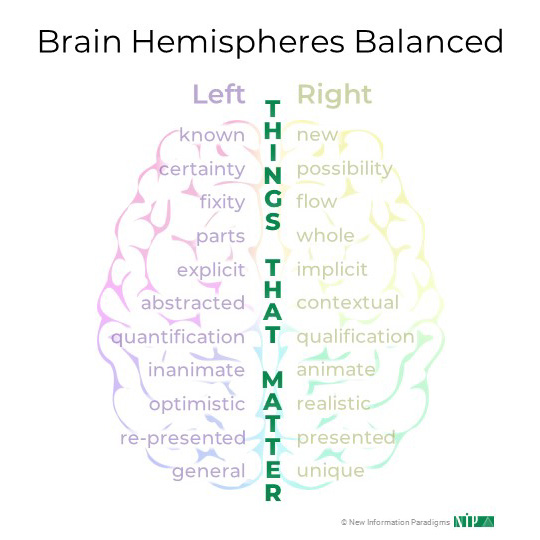Why “Things That Matter” really do matter: Part 5: Why It Works

- Part 1: What are “Things That Matter”?
- Part 2: What are we currently doing?
- Part 3: Why aren’t the Things That Matter working?
- Part 4: What’s the alternative?
- Part 5: Why does it work?
“Things That Matter” is the foundation of our Value Management approach.
But it seems obvious what it means, and even more obvious that the Things That Matter are what everything we do should be centered on. So, what more is there to say? What does this add that people aren’t already doing? What are the big insights here?
This series answers these questions – and many others – to show precisely how and why the Things That Matter really do matter, and so let’s conclude with why our Things That Matter-led process works.
Why Things That Matter work: immediate power
A big part of why the “Things That Matter” process works is that it’s common sense.
Who would argue that we shouldn’t be focused on what matters? Who wants to be focused on what doesn’t matter?
It’s also intuitive.
We just “get” what the phrase means – since childhood, when something’s wrong or needs sorting out, we’ve been asked “what’s the matter?” – and so it taps into something powerful and compelling for us to get things out onto the table.
Moreover, it’s also intuitive what you need to do: think of literally anything that matters to your customers, your organization, or to you, and you’re away.
But just because something is intuitive and seems obvious, it doesn’t mean there’s no depth behind it – indeed, it’s usually the opposite, and that’s definitely the case here.
Why Things That Matter work: science
To begin by diving right down, the Things That Matter concept fits with how we think, where the science tells us that the two hemispheres of our brains broadly work in very different ways.
The Things That Matter then sit in the sweet spot between those hemispheres, because – as we’ve seen – they occupy the middle ground between abstract (broadly right hemisphere) and actionable (left hemisphere):

That’s important in two ways:
- For lots of reasons, we tend to favor the left hemisphere of our brains – especially in the West – and we lose an awful lot in the process: the “Things That Matter” concept helps restore balance.
- The “Things That Matter” concept taps into, and helps get the best out of, both hemispheres – maximizing creativity and effectiveness.
The Things That Matter fit with how we think.
Why Things That Matter work: Value
Coming “up” a level, we then reach the primacy of Value, and how it’s the only way to effectively navigate Complexity.
Ultimately, any organization’s primary purpose is to attend to what its customers value, and that then provides the context for what its employees, its stakeholders and its partners value.
Value of whatever kind is what we are all aiming for – it’s what engages and inspires us; it’s the reward for what we do – and it’s also where change is first felt and noticed, so it’s how we stay in touch with what’s going on.
The Things That Matter articulate the substance of Value, providing anchors: they’re what attract, gather and give shape to relevant information, they connect people to shared purpose and meaning, and they clarify priorities and decision-making.
Put that all together, and that means they make it possible for people to take fast, autonomous, congruent and effective actions in situ.
Compare and contrast with traditional command-and-control structures, and it’s clear why this is the only way to keep up.
Why Things That Matter work: the phrase itself
Even more basically, there’s the phrase itself.
As we’ve already seen, “Things” is all-encompassing. Nothing is off the table, no “things” are “wrong”, and everyone and everything can be included – authentic inclusion.
But if that sounds too open-ended, look to the end of the phrase: “Matter”.
This immediately sets scope and ensures relevance – we’re only talking about what matters, and again, that’s truly inclusive: regardless of why it matters, or to whom, it’s in scope.
And then, finally, almost as a bonus, you’ve got “That” in the middle, which grounds things even more: it’s not “things that did matter” or “things that might matter”; it’s just things that matter, here… and now.
So even the phrase itself has power: it’s totally open-ended, and ruthlessly effective at defining, and controlling scope.
(And that’s just one of the polarities the Things That Matter concept encompasses: objective and subjective value; abstract and actionable; even brain hemispheres; the list goes on… But the point is hopefully clear: lots of difficult and often opposing factors are either resolved or balanced.)
Why Things That Matter work: practical benefits
But the Things That Matter approach also works because of the practical benefits it leads to.
We’ve already touched on it, but it encourages empowerment. People are engaged to help shape what matters. They’re connected to purpose and can contribute to fulfilling it. They’re given what they need to take responsibility and to act autonomously and effectively.
People that are empowered then generally experience improved morale, which helps greatly with recruitment and retention – a really live issue for most at the moment – and the benefits then only multiply with how the Things That Matter create a shared space.
This counteracts the siloing we talked about earlier: the Things That Matter now become the focus, and everything else fits into and around them, rather than the other way round as it mostly is at the moment.
A shared space also fosters empathy: just the idea that the different parties have different Things That Matter starts that process, but you’re also now able to understand the other party’s perspective and priorities.
That leads to alignment: alignment on areas of shared focus and opportunity, alignment on shared challenges, and conscious understanding and management of differences.
At this point, collaboration naturally emerges and flows, and finally, trust develops: through transparency, and as the parties act congruently with the Things That Matter, and start to deliver on them.
So, whilst we’ve only skimmed the surface, the Things That Matter has immediate power – it’s common sense and intuitive – it has conceptual power, and it has practical power.
In conclusion
We therefore reach the end of this overview of the Things That Matter, and we’ve covered a lot of ground.
We’ve seen that the Things That Matter are the elements of Value – Value in its widest sense – and that they’re critical to outcomes, whilst being increasingly subjective.
We saw the challenges with them, especially the subjective Things That Matter, and we saw that there are all kinds of issues on the ground – we’re not clear and aligned, and that’s especially true in relationships.
We looked at how the context for all this is unprecedented Complexity, where relationships are crucial, but where they’re not working as they need to – mainly because our existing approaches aren’t fit for purpose.
We looked at how the Three Step Process provides the alternative, and we’ve finished here by delving into the concept of “Things That Matter” to see why it works, including some of its practical benefits.
We therefore have a way to understand and address existing issues, and we can also achieve transformation.
Ready to get started?

